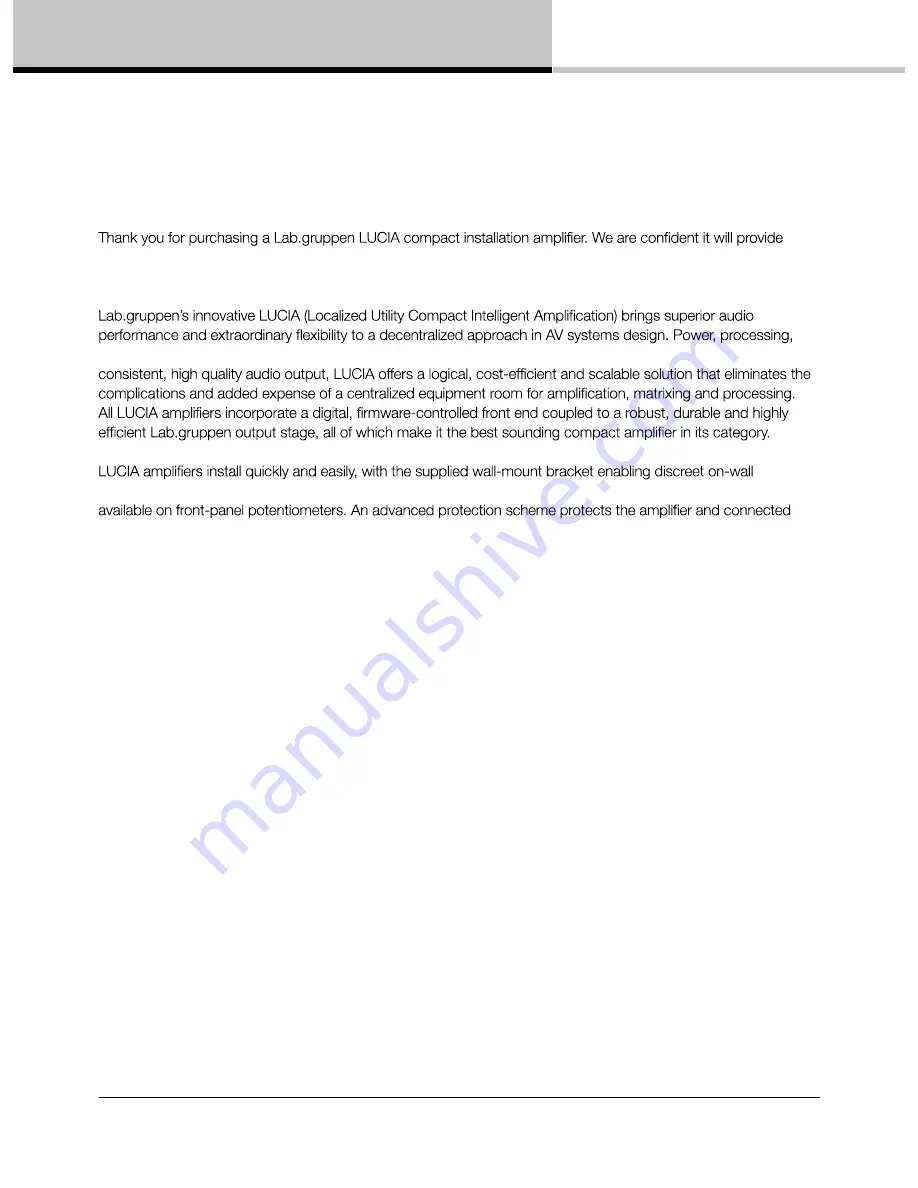
5. Introduction
6
LUCIA Operation Manual rev 1.2.0
5. Introduction
5.1. Welcome
outstanding performance, reliable operation and a long service life in any type of commercial sound or general AV
application.
control and I/O are conveniently placed exactly where they are needed. In many AV applications requiring
placement behind video displays. All connections are via Euroblock screw terminals, and level setting is
loudspeakers from potential damage caused by clipping, thermal overload, or extreme low line voltage.
5.2. Features (all LUCIA models)
5.3. Additional features on LUCIA 60/2M, 120/2M and 240/2M only
•
Comprehensive DSP features
– Per channel presets for high-pass filter, parametric EQ,
multi-band compressor, and look-ahead limiter
•
Automatic Dynamic Loudness Contouring™
– DSP automatically adapts to optimize performance
at any output level
•
Optimized presets
– Available for specific loudspeaker models
•
Configuration software
– Windows and Mac software wizard for initial set-up, and advanced editor for
preset configuration (LUCIA connection via USB)
•
RS232
– Remote control and monitoring from third party control solutions
•
GPIO
– Remote control (e.g. wall panel) for channel switching, level control and integration with paging systems
•
Efficient Class D amplifier
– Patented design for low distortion and minimal heat dissipation
•
Compact form factor
– Half-rack, 1U chassis and supplied bracket for discreet on-wall mounting
(e.g. behind display screens)
•
Intelligent fan control
– Silent operation at idle and at lower output levels
•
Fail-safe operation
– Comprehensive short circuit, thermal, and under-voltage protection
•
Universal power supply
– Operates at 100 - 240 V AC (50 or 60 Hz)
•
ENERGY STAR
®
qualified
– Conforms to latest specification energy efficiency standards
•
Maximum output power across range of loads
– Power output remains constant into 2, 4 or 8 ohms
•
Auto Load Sense™
– Proprietary auto-set VPL™ (Voltage Peak Limiter) for optimum performance
with any connected load
•
4 x 4 mix matrix
– Route input signals internally to amplifier or to line-level outputs







































